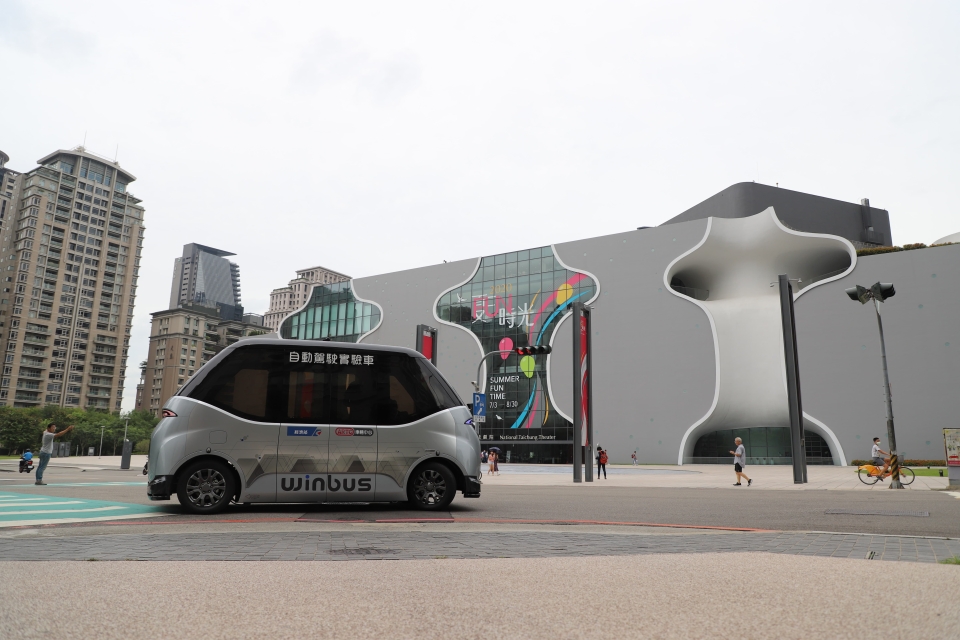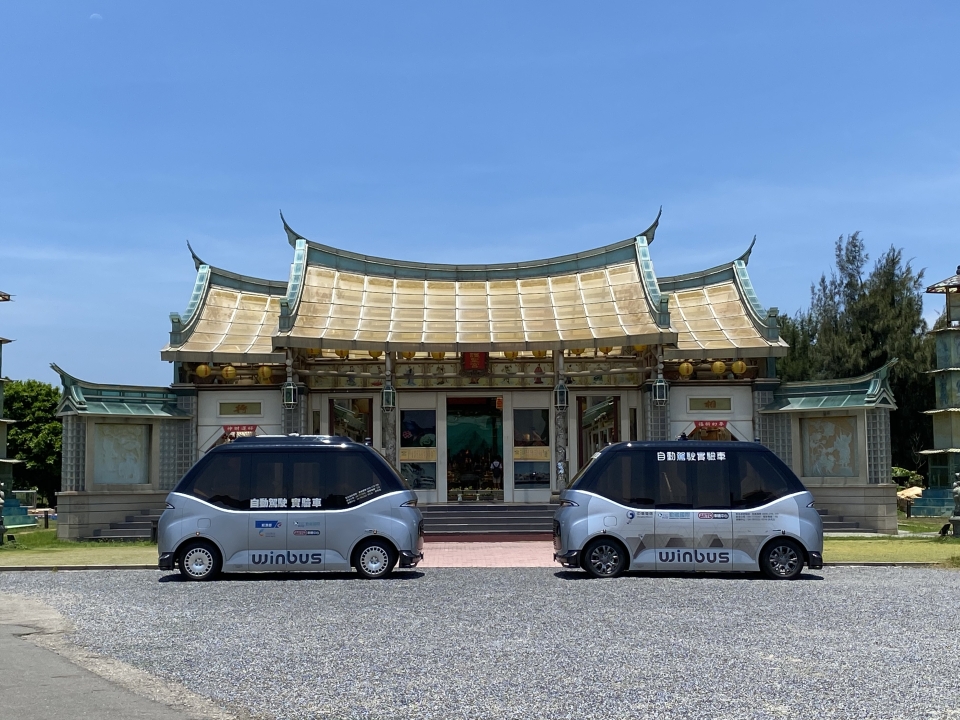A Step Closer to Autonomous Rail Rapid Transit with MIT WinBus
2021/08/02 | By CENSThe Taiwanese-made and designed WinBus is among the front-runners in the domestic autonomous electric vehicle scene, first unveiled to the public in the summer of 2019. Created by the Automotive Research & Testing Center (ARTC), WinBus is an SAE Level 4 e-bus fully designed and manufactured by Taiwanese suppliers, ARTC promotional engineer Joe Tu said. The self-driving e-bus is a moving platform that has integrated the best of what Taiwanese businesses can offer in its auto, electronic parts, and semiconductor technology.

WinBus became the first experimental autonomous e-bus to set off on public roads in Taiwan in 2020. The design and platform make it convenient and easier to integrate with diverse needs, Tu said. For instance, local governments looking to deploy self-driving e-buses for public transportation options could quickly integrate WinBus into their fleets, making it a highly versatile, flexible solution.
One of the earliest on-road implementations of WinBus is in Changhua, where ARTC worked with Changhua County Government to set up a fixed tourist route for the domestically-developed e-bus to drive on, primarily ferrying tourists between tourist factories and attractions. Tu added that WinBus could also be found on the National Chung Hsing University campus, in Kaohsiung, and Yilan's pilot zones, becoming public transportation options and a tourist attraction.
Aside from ferrying tourists and becoming a social media staple, WinBus is set to become a pivotal factor in Taiwan's push for smart traffic, smart intersections, and smart cities. Tu used the Autonomous Rail Rapid Transit (ART), or rail-less electric trains, as an example. ART has been catching on in many popular tourist attractions overseas, primarily due to the variety and more straightforward implementation than building the necessary infrastructure for metro stations. Moreover, as the up-and-coming trend in the autonomous vehicle field, Tu pointed out that the ART concept has gained traction, along with the government actively planning applications for ART on Taiwanese roads.
Combining a V2X connection system for communicating with devices within the e-buses' range, a backend platform, and the ARTC-designed "people flow analysis device," a fleet of WinBuses could operate as an ART as well. Setting ART up is fairly straightforward once the vehicles themselves are developed, as it does not require building stations or laying down rail tracks on the ground, which needs time, money, and planning. All a WinBus would need is something similar to a bus stop, in which the self-driving system and people flow analysis device could pinpoint passenger flow at each stop and allow the system to decide whether the e-bus should stop to pick up passengers. This helps lower down potential infrastructure costs, and the flexibility allows for implementing ART in rural areas, connecting routes between metro or light rail stations, or serving as shuttle buses during rush hours or operating in restricted lanes.
The people flow analysis device can detect passengers waiting at each stop and transfer the data back to the backend systems. The system uses an AI-based segmentation method to calculate people flow, which achieves several advantages: imaging sensors were more cost-efficient, the segmentation method helped avoid shielding effect, which helps verify objects more accurately.

The development trajectory of WinBus and related technologies resemble how the self-driving vehicle hub, MCity in Michigan, the U.S. came to be. Due to the inherent circumstances in developing self-driving vehicles, Tu said that these vehicles cannot undergo tests and AI training on real roads. Rather, closed-road testing sites would be the only way to verify the AI system safely.
Autonomous vehicles like WinBus really shine when applied together with smaller-ranged functions like smart intersections, where the self-driving car would send and detect nearby sensors and acquire data to determine right-of-way; or in the case of large-scale applications like smart cities. Vehicles would detect and send data constantly in such an environment in order to maintain safe traffic conditions by communicating with not only the traffic infrastructure, but also all the other cars on the road.





